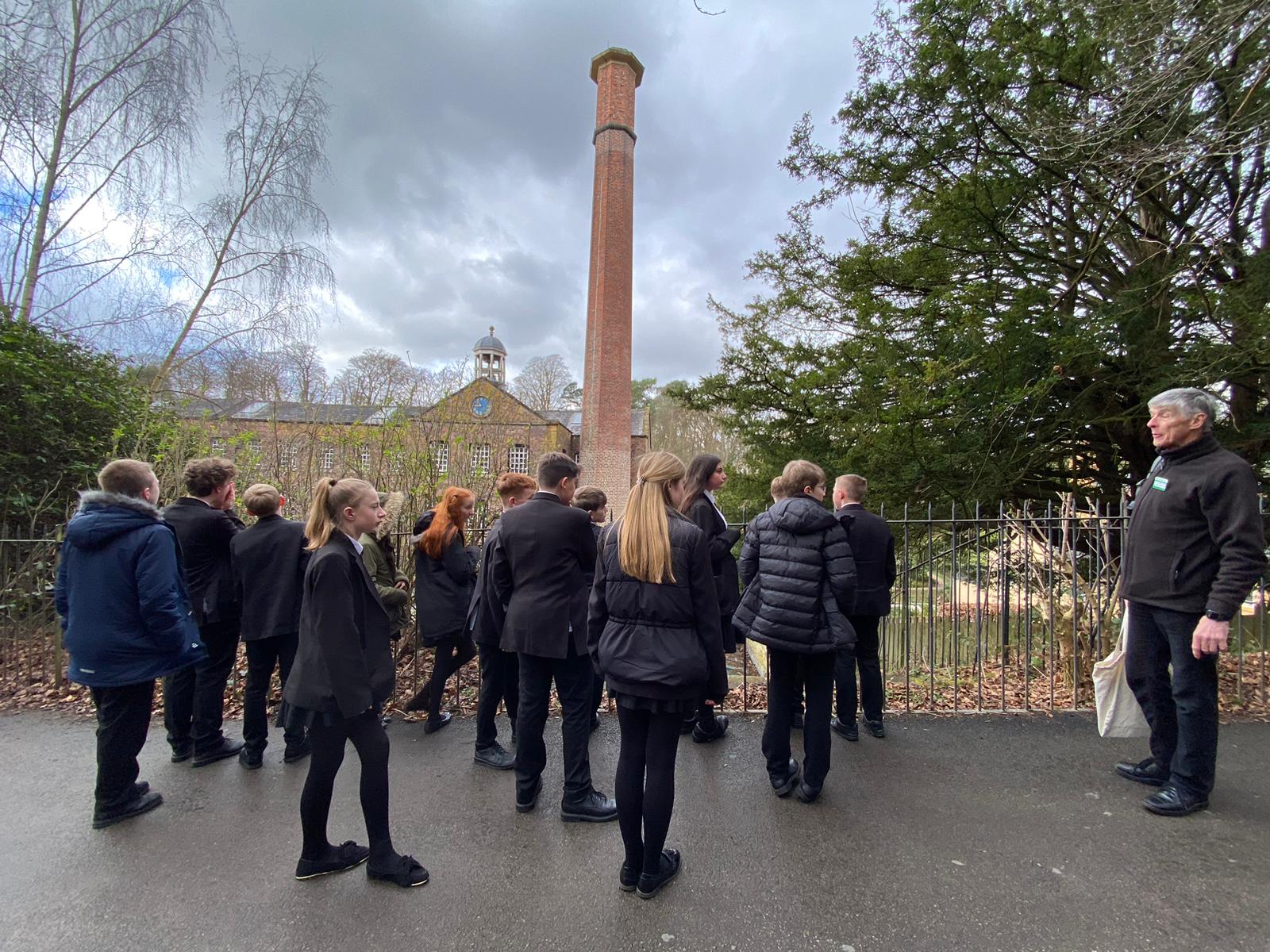Year 8 go back in time for History trip
10 March 2023

Over the past week, two groups of Year 8 students had the opportunity to visit Quarry Bank Mill, a working cotton mill in Styal, to see what life would have been like in Industrial Britain. The mill is a rare surviving eighteenth-century cotton mill, built by the industrialist Samuel Greg, and showcases working heritage machinery.
History teacher, Miss Ackers, who led the trips, said, "Our pupils were able to tour the Apprentice House to see how the children lived. Up to 90 children were housed there back then, working 10-hour days in the mill. Pupils then walked into the village to see where the adults would have lived. They watched the cotton machines working up close and personal - it was extremely loud, the poor workers' ears!"
As part of the visit, pupils enjoyed being given their own cotton fibres to mould and play with to test its strength. They were also challenged to do the jobs that the Apprentice children would have done such as carrying cannisters full of cotton back and forth (we made it into a relay game!) and removing empty bobbins before replacing them with new ones. Finally, the students were able to have a go at scavenging (picking up the stray bits of cotton) - it was tiring work!
Miss Ackers summed up the trip, "The students seemed to really enjoy themselves and we were glad that we could provide such an interesting experience to enrich their learning and inspire a love of History"
Quarry Bank Mill
Quarry Bank Mill is one of the best preserved textile factories of the Industrial Revolution. Built in 1784, the cotton mill is recorded in the National Heritage List for England as a designated Grade II listed building.
The mill was established by Samuel Greg, and was notable for innovations both in machinery and also in its approach to labour relations, the latter largely as a result of the work of Greg's wife, Hannah Lightbody. The family took a somewhat paternalistic attitude toward the workers, providing medical care for all and limited education to the children, but all laboured roughly 72 hours per week until 1847 when a new law shortened the hours. Greg also built housing for his workers, in a large community now known as Styal Estate.
Slide show, please scroll>>







